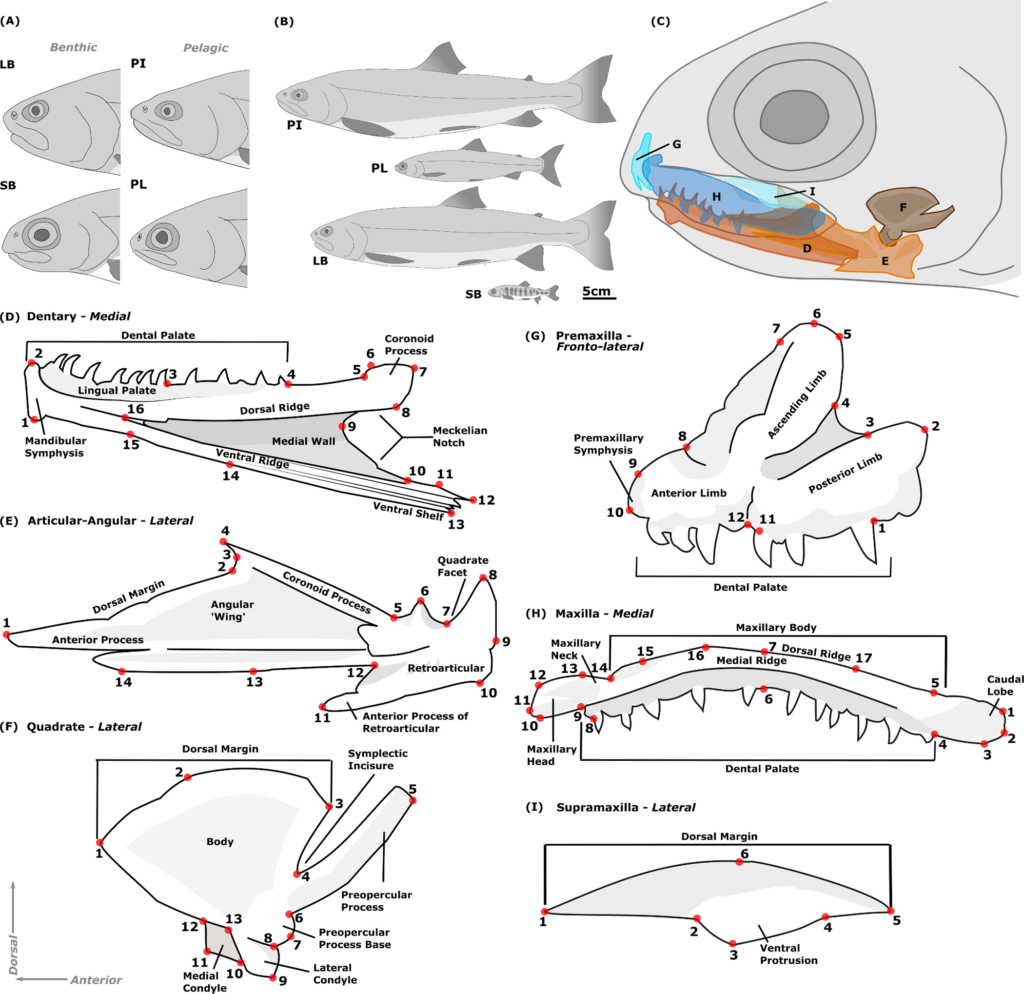How fast can evolution shape morphologies and anatomical forms in animals? Iceland was covered by ice-age cap about 20.000 years ago, and after the glaciation waterways opened up and were colonized by multiple species. Among them were Arctic charr, a cold tolerant pioneer fish, that normally spawns in freshwater but feeds and grows in marine habitats. Multiple populations of these fish have colonized icelandic lakes and become isolate and adapted to unique habitats, like in the volcanoic belt of Iceland. Under those new conditions they have evolved.
Lake Thingvallavatn harbours four forms of charr, that all have evolved from the same ancestor into quite distinct forms, two small ones and two large ones. The forms differ most dramatically in head shape, and the length of their lower jaw. Guðbjörg Ósk Jónsdóttir has studied their bones, and found them to differ most dramatically in the dentary bone of the lower jaw. This illustrates that in as few as 3000-4000 generations, these fish have evolved quite dramatic changes in their morphology, most likely due to them utilizing different prey items in the water column (copepods and sticklebacks) and the rocky lava bottom (snails).
Guðbjörgs paper on this project was published in Plos One May 21st, 2024.
Jónsdóttir GÓ, von Elm L-M, Ingimarsson F, Tersigni S, Snorrason SS, Pálsson A, et al. (2024) Diversity in the internal functional feeding elements of sympatric morphs of Arctic charr (Salvelinus alpinus). PLoS ONE 19(5): e0300359. https://doi.org/10.1371/journal.pone.0300359


